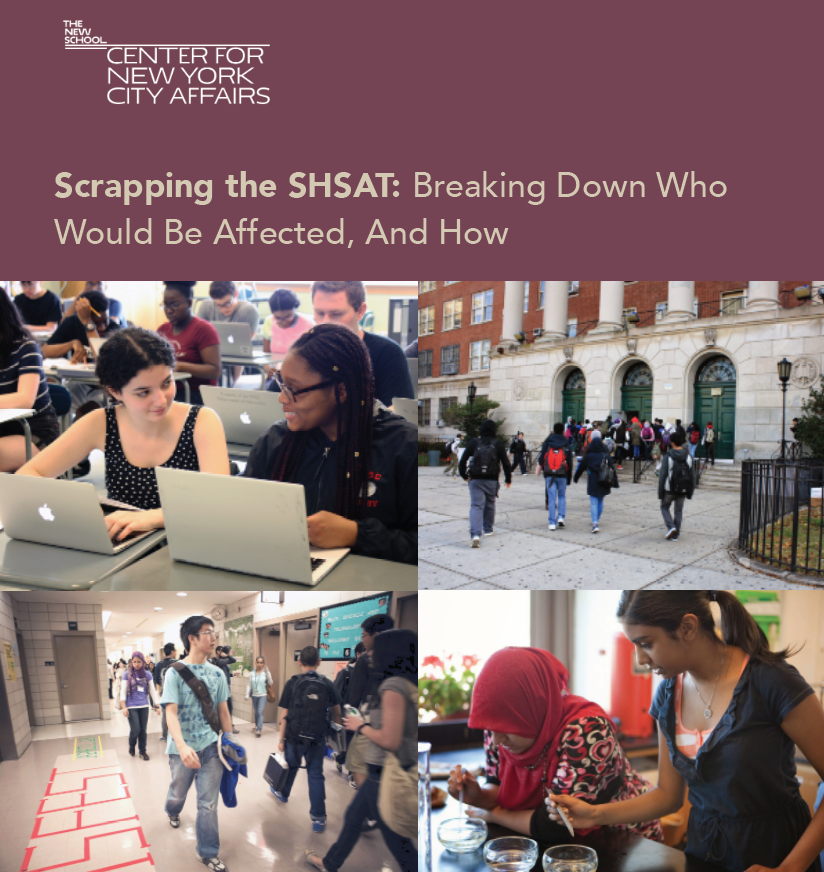By Nicole Mader, Melanie Quiroz, and Carmen Cheung
Mayor Bill de Blasio’s proposal to end use of the Specialized High School Admissions Test (SHSAT) would make the city’s most elite public high schools more racially and ethnically diverse. The mayor’s plan would instead offer seats at the specialized high schools to the top performers in each of the city’s public middle schools. We tested this proposal and found that, if enacted, it would give some 2,000 academically qualified Black and Latinx students each year access to higher-performing schools and a more ethnically diverse cohort of fellow students than they typically have through the current school choice process. Students no longer eligible for specialized high schools would instead attend schools with academic performance and learning environment measures lower than the specialized schools, but far higher than the typical non-specialized high school. Nevertheless, the proposal is not exempt from the law of unintended consequences. Entrenched patterns of demographic and academic sorting among and within non-specialized high schools throughout the city could well intensify as a result of the proposal, because its impact would not be felt evenly across all schools.
While 82 percent of non-specialized schools would lose one or more students to the specialized schools, only 35 percent of non-specialized schools would stand to gain students no longer eligible for specialized schools. The interactive map below displays the net losses and gains, and concomitant demographic and academic shifts, each public high school would experience.

